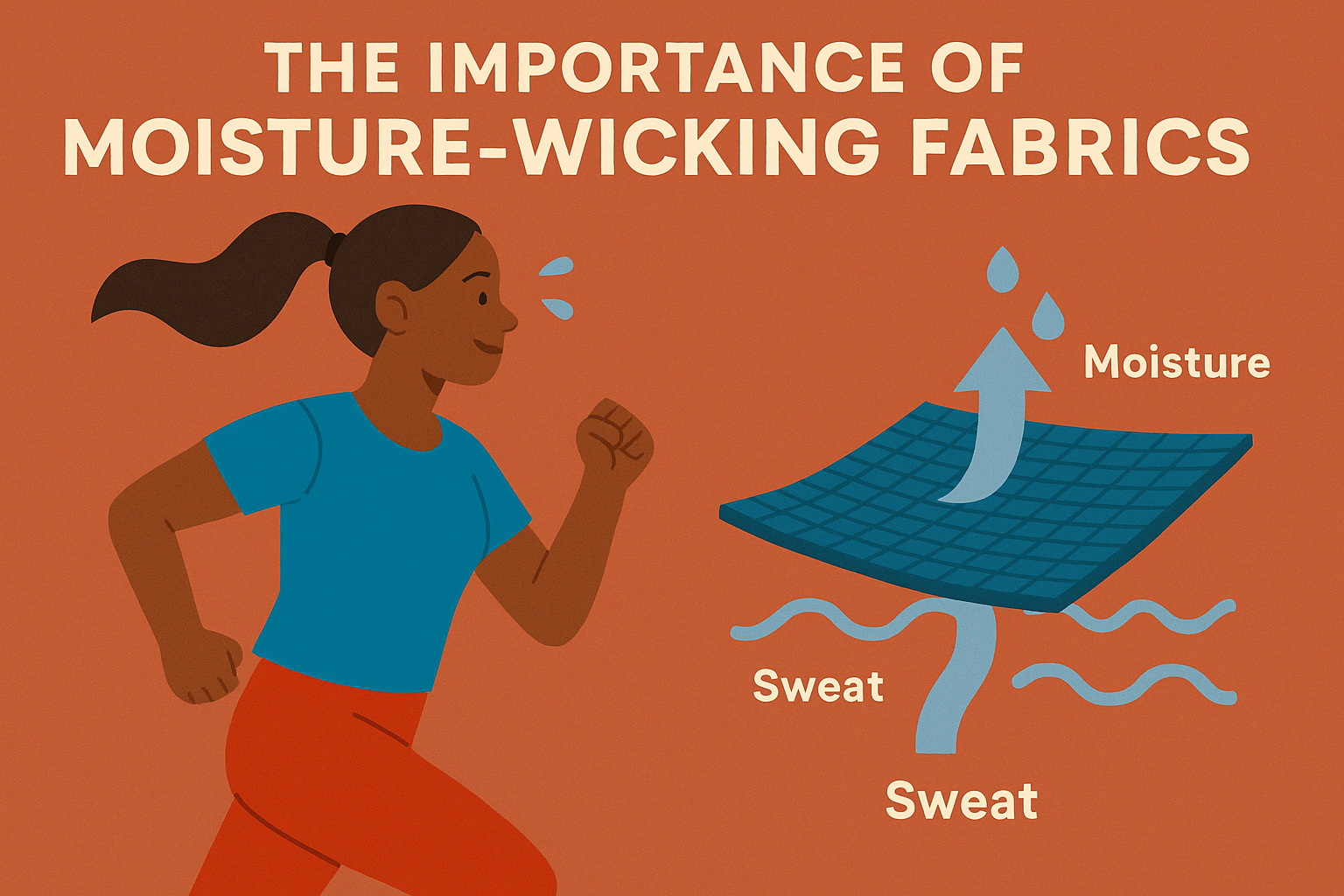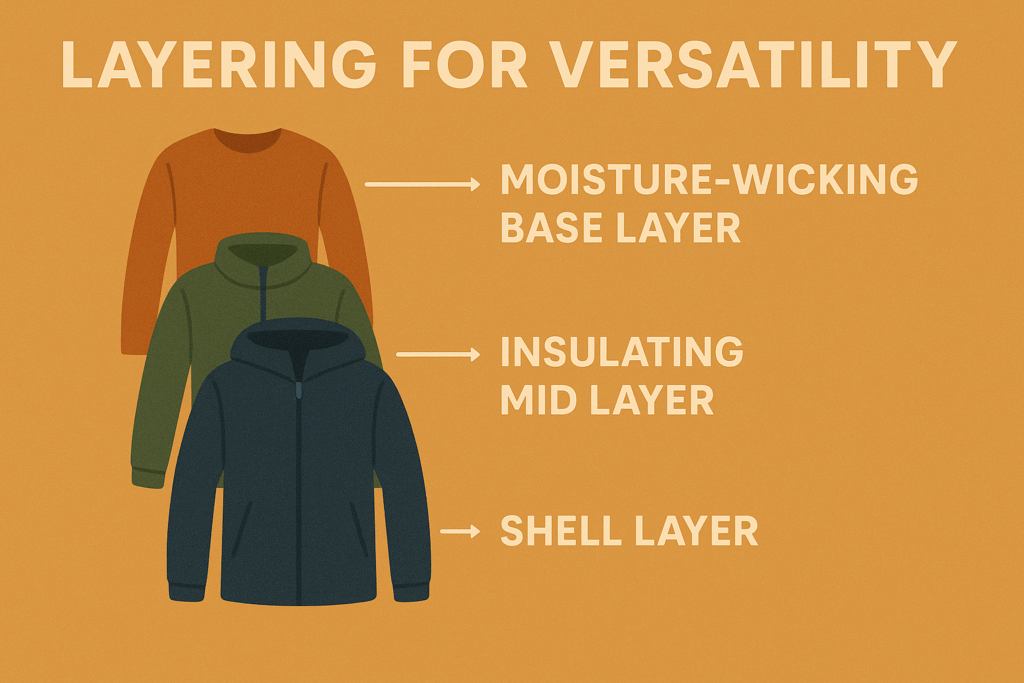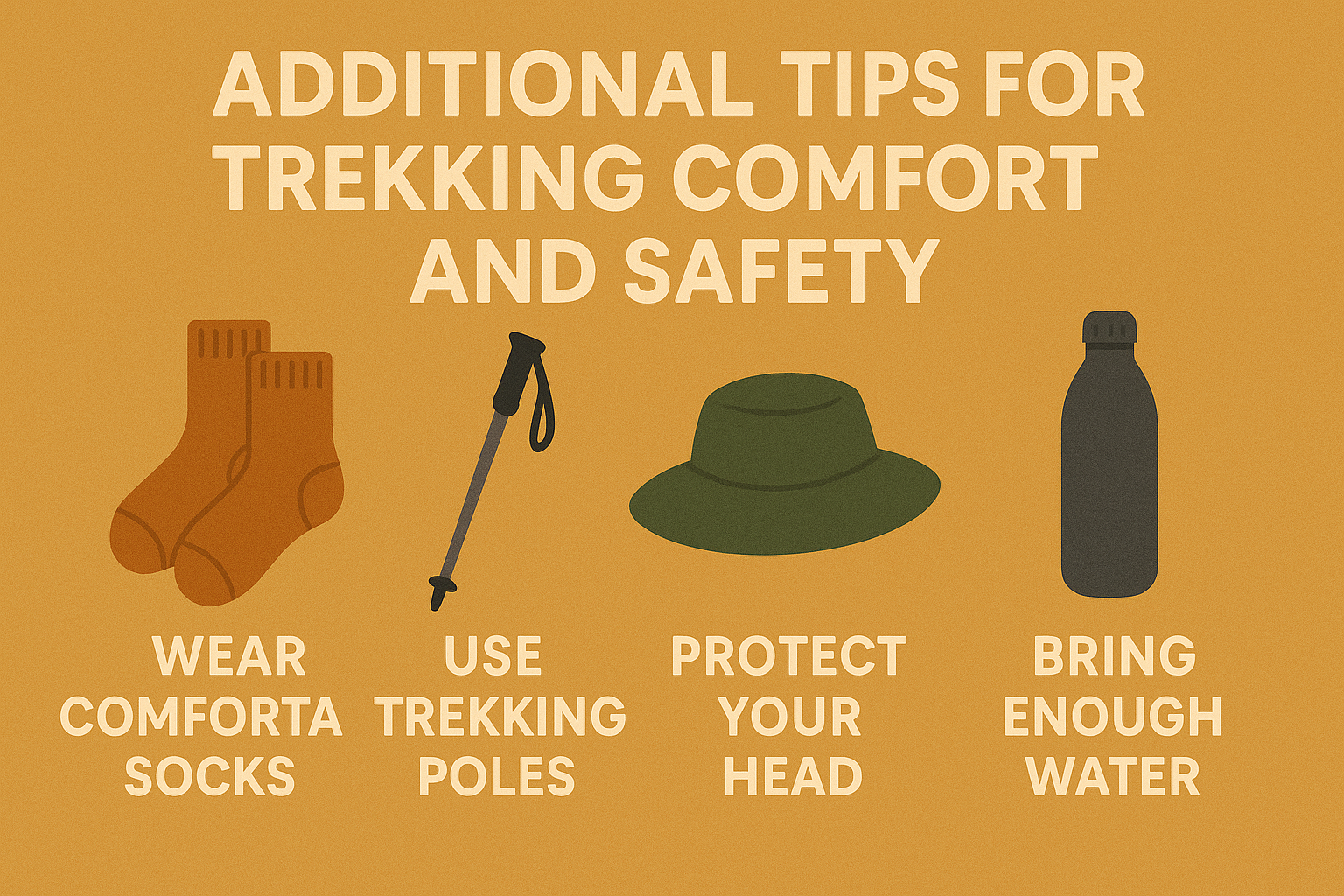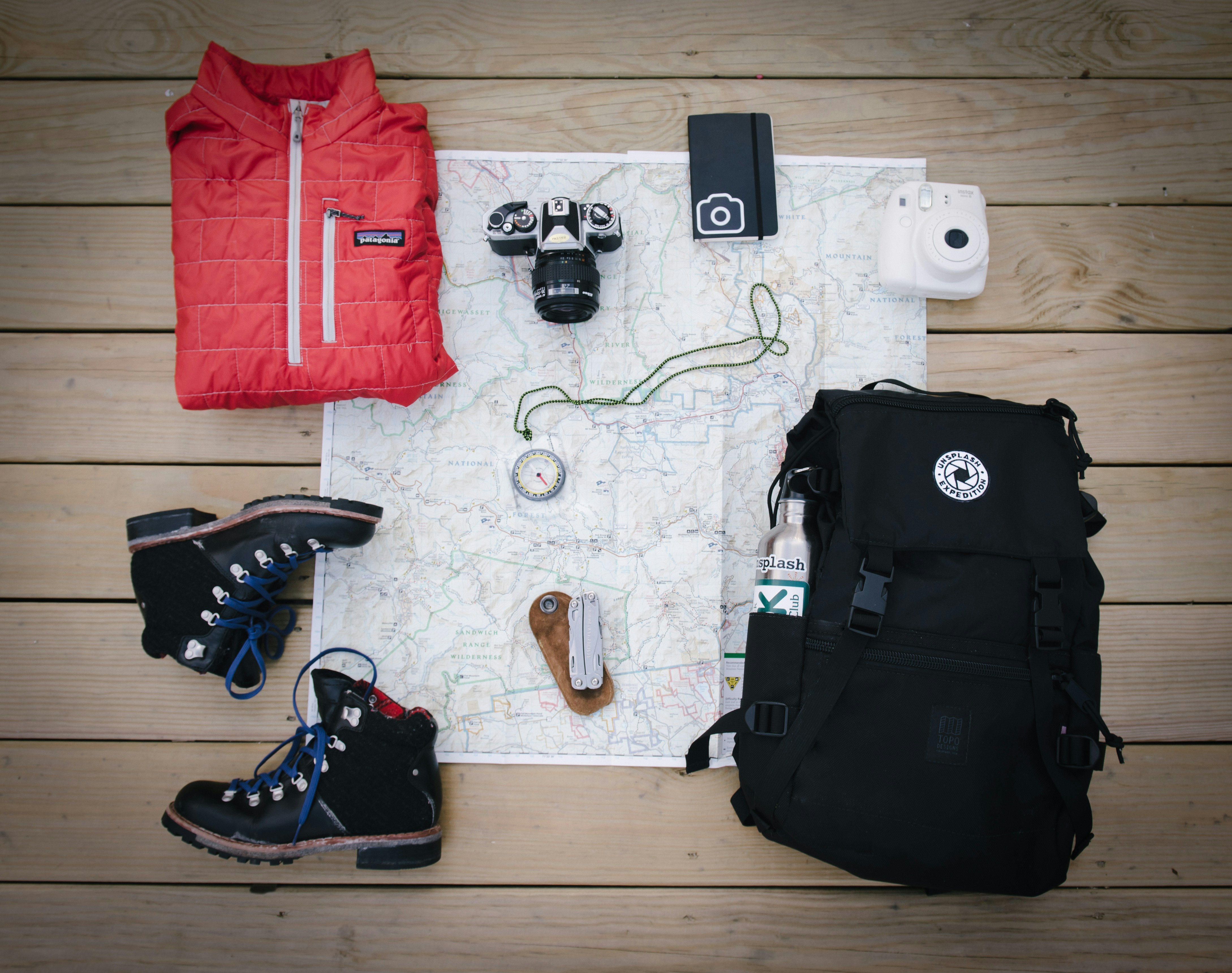Table of Contents
The Importance of Moisture-Wicking Fabrics

When it comes to trekking, the choice of trekking clothes can have a significant impact on comfort and performance. One of the most vital elements in suitable trekking apparel is the use of moisture-wicking fabrics. Unlike traditional cotton materials, which tend to absorb moisture, moisture-wicking fabrics are designed to pull sweat away from the skin and promote quicker evaporation. This characteristic makes them immensely advantageous for outdoor activities, where temperature control and comfort are paramount.
Cotton is a common fabric used in many clothing items; however, it has notable drawbacks when employed in trekking attire. When cotton becomes wet, whether from sweat or external sources like rain, it retains moisture, causing the fabric to feel heavy and damp against the skin. This can lead to feelings of discomfort and a higher risk of chafing, particularly when engaging in prolonged physical activities in varying weather conditions. In contrast, synthetic materials such as polyester and nylon offer superior moisture management capabilities, ensuring that trekkers remain dry and comfortable.
The effectiveness of moisture-wicking fabrics lies in their unique structure, which helps facilitate the movement of sweat away from the body. This type of fabric typically employs advanced technology to enhance breathability and promote heat dissipation. By doing so, these materials help maintain a comfortable body temperature, reducing the chances of overheating during intensive physical exertion. Furthermore, many moisture-wicking fabrics come with additional properties such as anti-odor treatments and UV protection, making them a reliable choice for any trekking enthusiast.
Ultimately, selecting clothing made from moisture-wicking fabrics can elevate the overall trekking experience, ensuring that the individual remains dry, comfortable, and focused on the trail ahead.
Layering for Versatility

When embarking on a trekking adventure, understanding the layering principle in clothing can significantly enhance comfort and performance. The layering system is typically comprised of three essential layers: the base layer, mid-layer, and outer layer. Each plays a crucial role in regulating body temperature and providing protection against external elements such as wind, rain, and cold.
The base layer is the first point of contact between your body and clothing. Its primary function is to wick moisture away from the skin, keeping you dry and comfortable. Materials like merino wool or synthetic fabrics, such as polyester, are commonly recommended for base layers because of their excellent moisture management properties and breathability. A snug fit is preferable as it allows for effective moisture transfer.
Moving on to the mid-layer, this is where insulation comes into play. The purpose of this layer is to retain body heat while still allowing moisture to escape. Fleece, down, or synthetic insulation materials are excellent choices for the mid-layer, depending on the conditions you expect to encounter. Fleece is lightweight and provides good warmth, while down offers superior insulation but is less effective when wet. For unpredictable weather scenarios, synthetic insulation can be advantageous due to its water-resistance properties.
Finally, the outer layer serves as your shield against the elements. This layer is typically windproof and waterproof, designed to protect you from rain, snow, and cold winds. Materials such as Gore-Tex or other breathable fabrics are ideal as they allow sweat to escape while providing a barrier against moisture. It is essential that the outer layer fits well over the base and mid-layers, with features like adjustable hoods and cuffs to enhance protection.
In conclusion, the effective use of the layering system not only optimizes comfort and temperature regulation but also ensures that trekkers can enjoy their adventure without being hindered by the weather. Understanding how to choose the right materials and garments for each layer is key to a successful trekking experience.
Choosing the Right Trekking Clothes Items

When preparing for a trekking adventure, selecting the appropriate clothing items is crucial for ensuring comfort, safety, and overall enjoyment during the journey. One of the recommended choices is convertible hiking pants, which provide flexibility by allowing trekkers to quickly adjust their attire based on changing weather conditions. These pants typically feature zip-off legs, transforming into shorts when temperatures rise, hence enhancing usability during long expeditions.
Moreover, long-sleeved shirts serve as effective barriers against both UV rays and insect bites, making them a smart option for outdoor exploration. Lightweight, breathable fabrics that wick moisture away from the body are especially beneficial, as they help maintain a comfortable body temperature. This aspect is vital in variable climates where trekkers might encounter both heat and cooler conditions, thus contributing to an enjoyable trekking experience.
Equally important is the choice of sturdy waterproof footwear, which is essential for maintaining stability and comfort on uneven terrain. Investing in high-quality hiking boots will provide adequate ankle support and traction, helping to prevent slips and injuries. Waterproof materials also aid in keeping feet dry during unexpected downpours or when crossing streams, allowing trekkers to focus on their journey rather than discomfort.
Lastly, moisture-wicking socks play a significant role in trekking attire. These socks are designed to draw sweat away from the feet, minimizing the risk of blisters and promoting overall foot health during extensive walks. Combining these essential clothing items not only enhances practicality and comfort but also equips trekkers with the protection they need against the elements, ensuring they are well-prepared for their adventures in nature.
Additional Tips for Trekking Comfort and Safety

When embarking on a trekking adventure, comfort and safety should be of utmost importance. One of the essential elements in achieving these goals is sun protection. Hats and sunglasses are crucial accessories that can shield trekkers from the harmful effects of UV rays. A wide-brimmed hat will not only provide shade for the face and neck but also help in regulating body temperature. Likewise, high-quality UV-protective sunglasses can significantly reduce glare, allowing trekkers to maintain better visibility while on the trails.
In addition to sun protection, the choice of clothing materials plays a vital role in comfort during a trek. Opting for breathable fabrics helps circulate air, keeping the body cool and dry even in warmer temperatures. Materials such as moisture-wicking polyester or merino wool effectively manage sweat, preventing discomfort caused by damp clothing. Furthermore, layering is a practical strategy for addressing fluctuating weather conditions. A versatile wardrobe allows trekkers to adapt to varying temperatures, whether facing the chill of early mornings or the heat of midday.
Moreover, safeguarding gear is an often-overlooked aspect of trekking preparation. A waterproof backpack is an indispensable item for any trekker, ensuring that essential equipment remains safe from rain and moisture. The right backpack should not only keep belongings dry but also provide adequate support and ergonomics, preventing strains during long hikes. Trekkers should also consider having an emergency rain cover for their backpacks, further enhancing their preparedness against unforeseen weather changes. By incorporating these additional tips into their trekking gear and preparation, individuals can substantially improve their overall trekking experience, prioritizing comfort and safety throughout their journey.





Leave a Reply